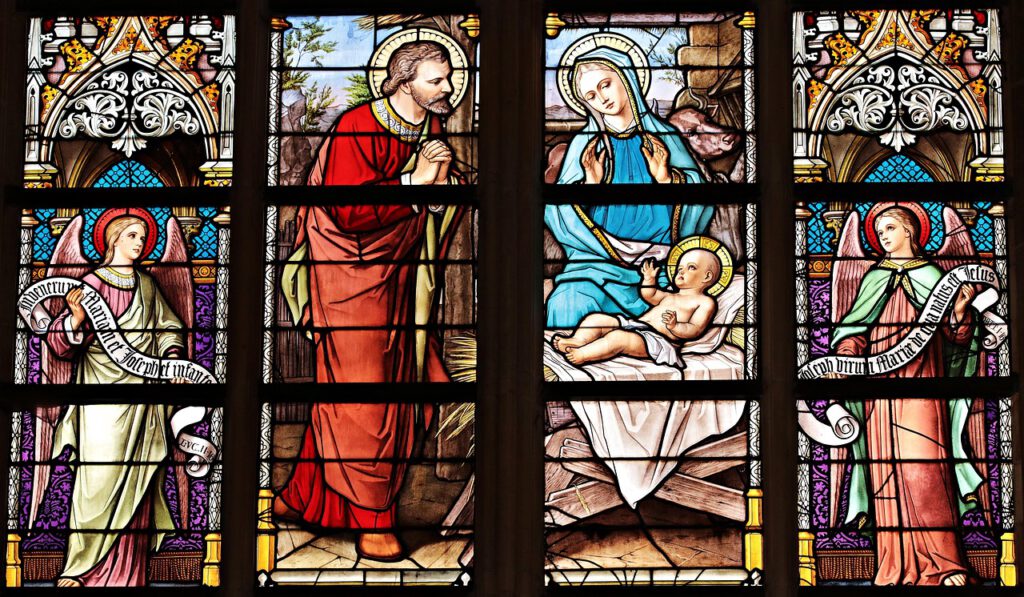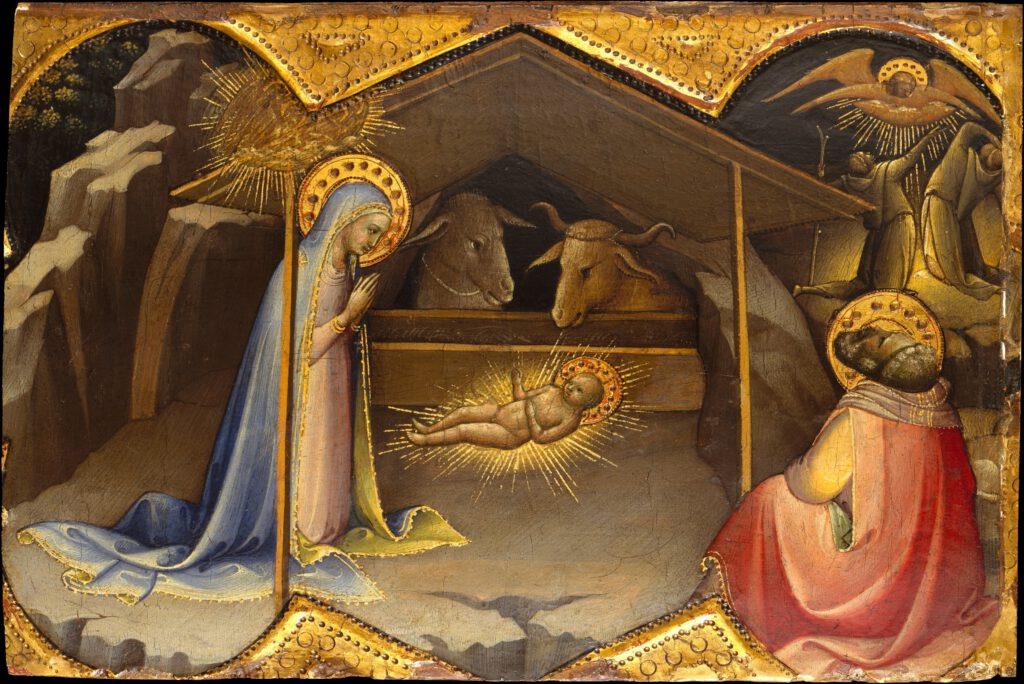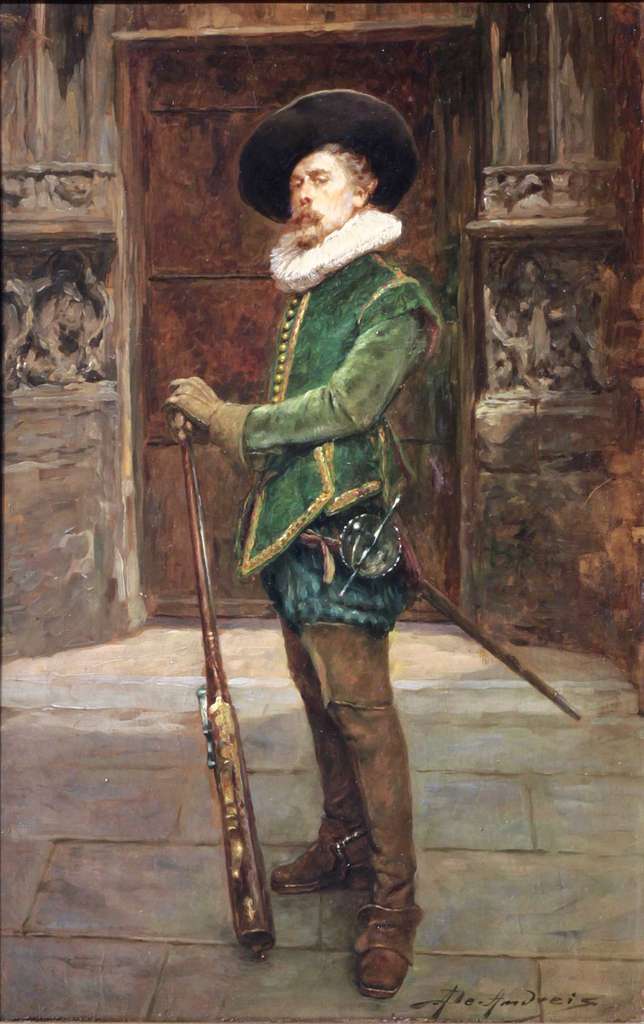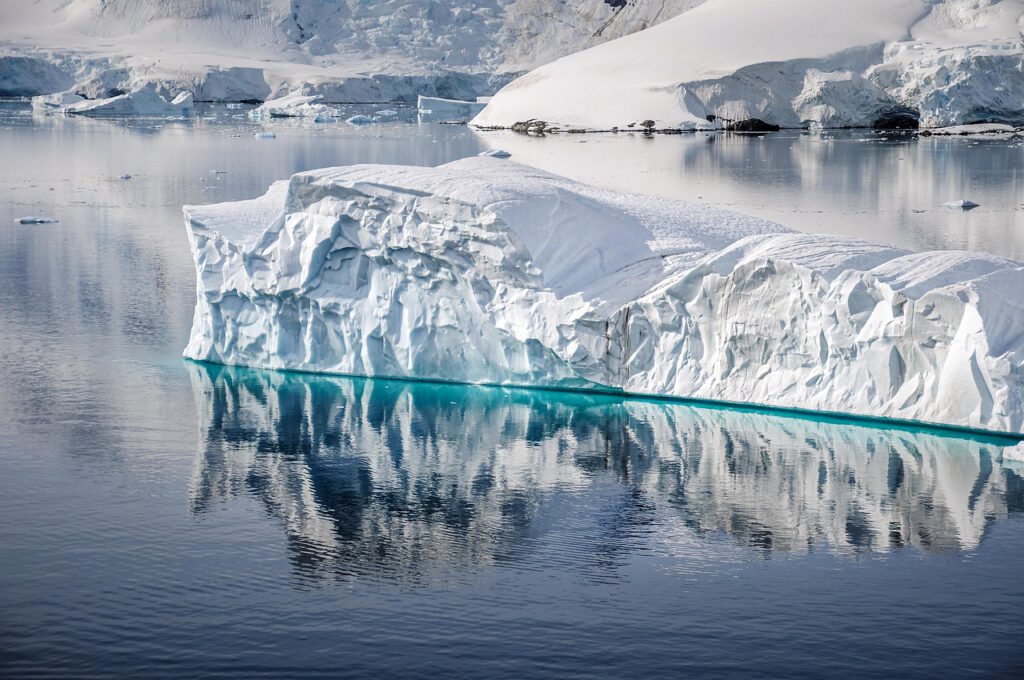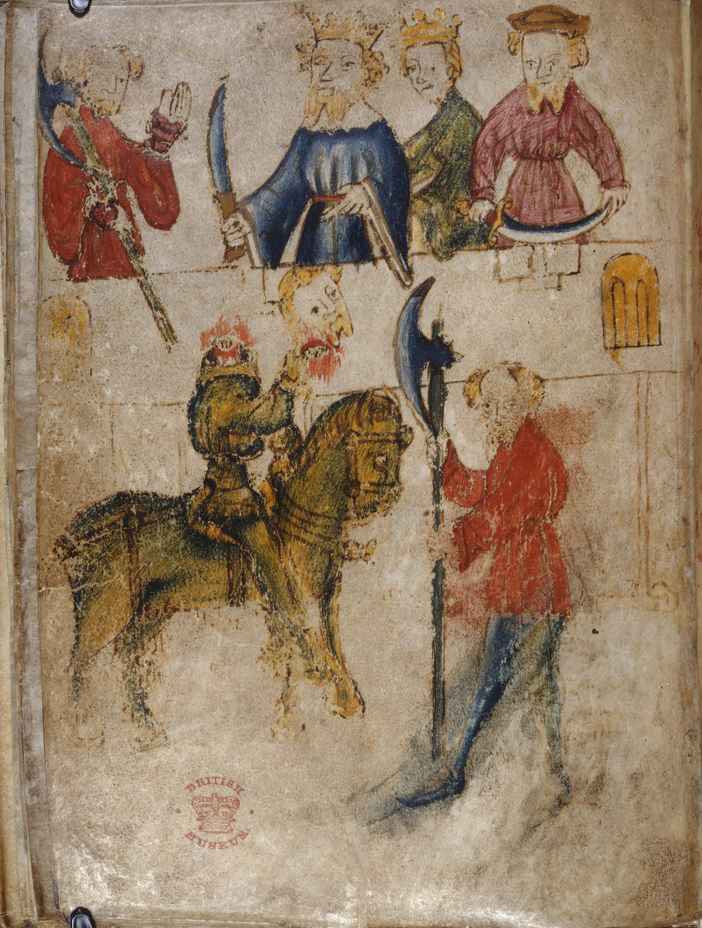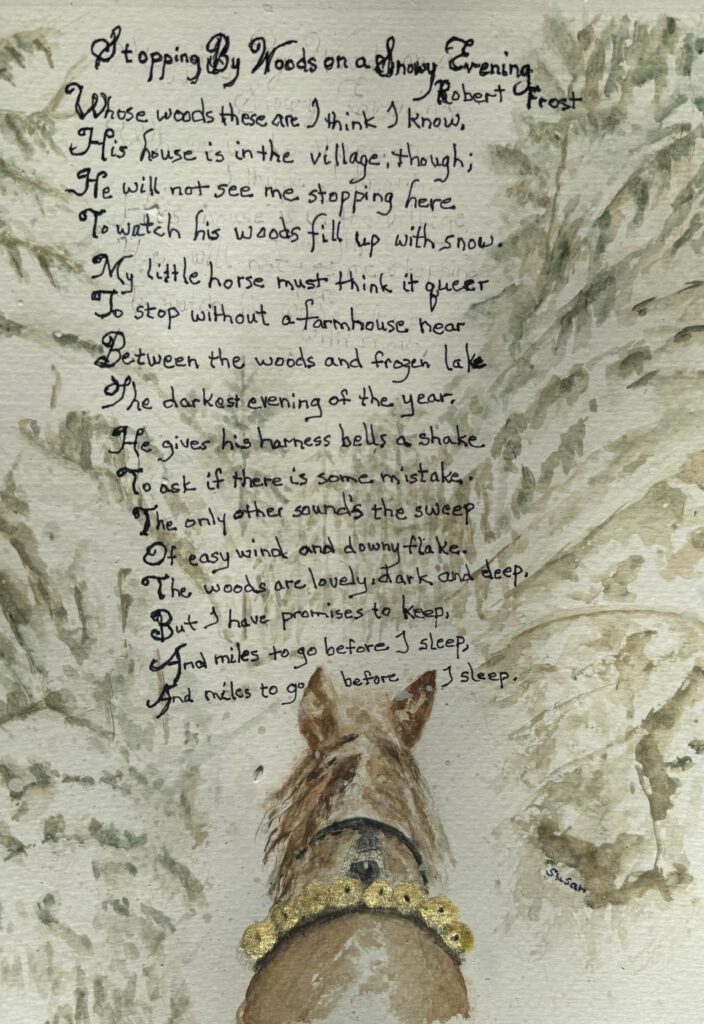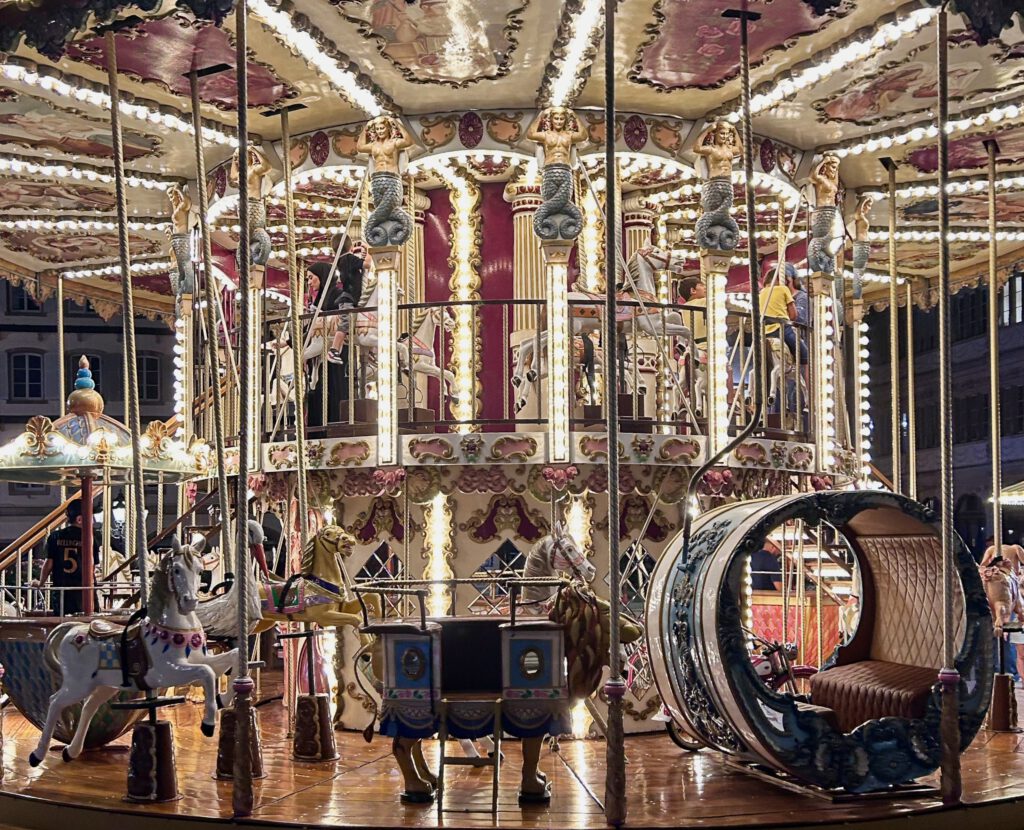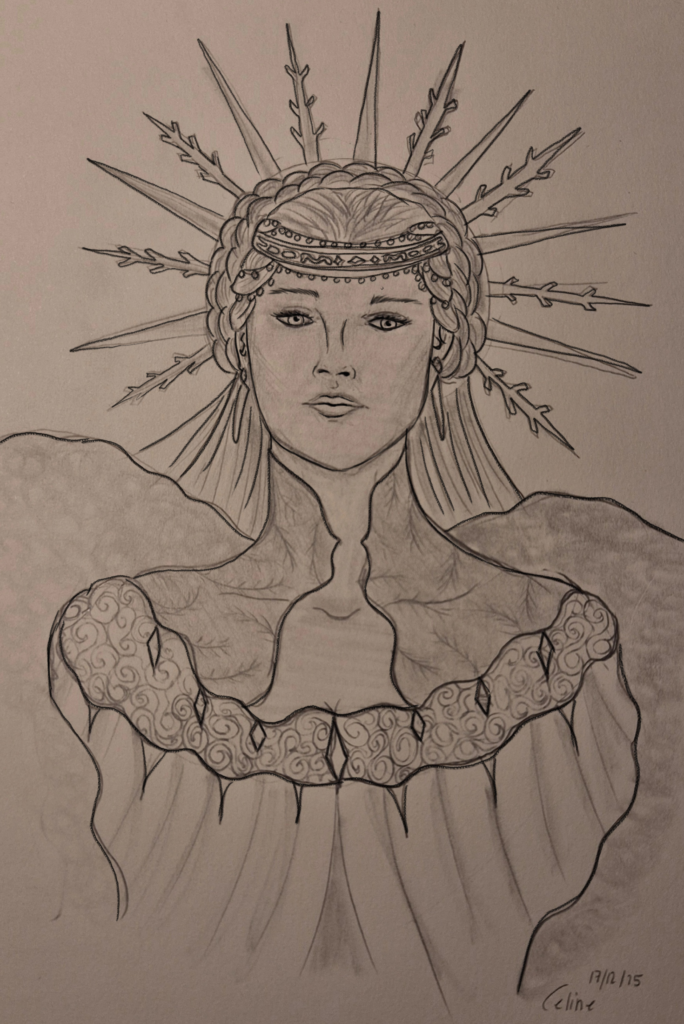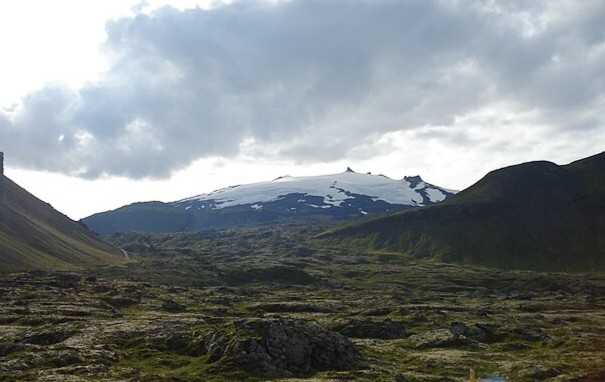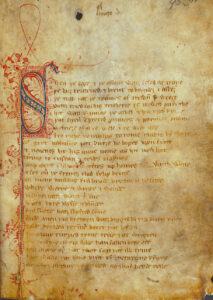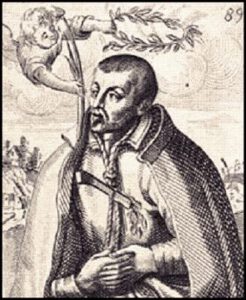“Scott’s Voyage in the Lighthouse Yacht” and Intertextual Transmission
Lesley Graham
Published in Connotations Vol. 34 (2025)
Abstract
This article takes as its point of departure a short note by Robert Louis Stevenson written as an introduction to his grandfather Robert Stevenson’s account of a trip taken in 1814 to inspect various Scottish lighthouses in the company of Walter Scott. The note, published in Scribner’s Magazine in 1893, is entitled “Scott’s Voyage in the Lighthouse Yacht.” Stevenson uses various source documents related to the trip in the lighthouse yacht written at different times. Together these documents form a complex intertextual network reflecting various points of view and purposes. They include the central document, Robert Louis Stevenson’s introduction to his grandfather’s account of the trip that focuses on Walter Scott; Scott’s written account of the trip which had appeared in J. G. Lockhart’s biography in 1837; and a wide variety of related texts. We are clearly dealing with an organic ensemble constructed not only to illuminate and memorialize the record of the Stevenson family of lighthouse builders but also to preserve the account of the state of early nineteenth-century Scotland described in the texts, thus ensuring that knowledge of the past lives and achievements of the family and of contemporary Scottish society would be preserved and transmitted.
[→ 135] Introduction
In the summer of 1814, during the recess of the Court of Session in Edinburgh, and three weeks after the publication of his first novel, Waverley, Walter Scott set off on a six-week vacation. He had been invited by the Commissioners of the Northern Lights Board to join them on their annual survey of lighthouses, potential sites for lighthouses and shipping lanes. Also aboard, overseeing the voyage, was Robert Stevenson, the Board’s engineer, designer of the Bell Rock Lighthouse, and future grandfather of Robert Louis Stevenson. The Lighthouse Yacht sailed around the coast of Scotland from Leith to Greenock by way of Shetland, Orkney, the Hebrides and Northern Ireland. The party set off on 29 July; and the trip ended on 8 September.
During the voyage, Scott filled five notebooks with his observations. Excerpts were published in the Edinburgh Annual Review in 1814, in the notes to the long poem “Lord of the Isles” in 1815, and eight years after the voyage Scott used some of the material in his novel The Pirate. A more extensive excerpt from the notebooks appeared in Memoirs of the Life of Sir Walter Scott, Bart. (ed. J. G. Lockhart) under Scott’s original, playful title, “Vacation 1814: Voyage in the Lighthouse Yacht to Nova Zembla, and the Lord Knows Where.” Two modern editions were published in the twentieth century, one under the title “Northern Lights,” the other “The Voyage of the Pharos.”1 The manuscript of Scott’s diary which had been missing since the end of the nineteenth century resurfaced in 2022 and is now in the hands of the Abbotsford Trust.
Robert Stevenson did not finish writing up his reminiscences of Scott until 1850, a time when he was perhaps feeling particularly nostalgic since, according to his grandson, he bitterly regretted no longer being able to take the annual cruise in the Lighthouse Yacht due to ill health. He sent the manuscript to his daughter Jane (referred to as Mrs. Warden in the introductory note) on 28 June and died just twelve days later. The trip had taken place thirty-six years earlier, and it was not until forty-two years after his death, a full seventy-eight years after the voyage, that it fell to Stevenson to finally have his memories published, in part at least. [→ 136]
This article presents a brief history of the voyage and the composition of Scott and Robert Stevenson’s accounts of it as well as his grandson’s introductory note. It examines the authors’ motivations, notably the desire to perpetuate the reputation of the Stevenson family, and to pass on ethnographic knowledge of early nineteenth-century Scotland.
The Pitch and Publication
Seventy-six years after the voyage, in August 1891, Robert Louis Stevenson2 wrote to Edward Burlingame, the editor of Scribner’s Magazine, “I find among my grandfather’s papers his own reminiscences of his voyage round the north with Sir Walter, eighty years ago, labuntur anni! They are not remarkably good, but he was not a bad observer, and several touches seem to me speaking (Letters 7: 150). Stevenson was writing from Samoa where he had settled in 1890. His grandfather’s papers were in his possession for the purposes of work that he had begun on a projected family history. Stevenson’s working title—Memoirs of a Scottish Family—emphasized the essential Scottishness of the family and his own urge to commemorate that aspect of their lives and times (Letters 7: 120). This is the work referred to in the letter to Burlingame by the phrase, “I give you the first offer of this, according to your request; for though it may forestall one of the interests of my biography, the thing seems to me particularly suited for prior appearance in a magazine”—although it could be contended that, rather than spoiling the scoop, the Scribner’s article would act as a teaser for the planned book. In the end, the biography would remain unfinished and was not to be published until two years after Stevenson’s death and then only in part as Records of a Family of Engineers edited by Sidney Colvin.3
Stevenson pitches the piece to Burlingame by promoting his grandfather’s powers of observation as well as the enlightening details in his account, offering to cut out any anecdotes that have no bearing on Walter Scott, and to introduce “the old gentleman” who, although he was elderly when he eventually got round to writing about the voyage, was not, in fact, so very old when it took place (he was forty-two; Walter [→ 137] Scott being just a year his senior). The offer must have left Burlingame eager to publish the account and the introductory note but unsure about just who they were celebrating: Robert Stevenson, Walter Scott, Robert Louis Stevenson himself, or, as I propose here, something that went beyond these three giants of Scottish culture—the record of a disappearing Scotland worthy of preserving and transmitting to future generations? In much the same way as the lighthouses Scott and Robert Stevenson had surveyed guided vessels around the physical contours of Scotland, Stevenson set out to guide readers around the coast of Scotland, highlighting certain ethnographic specificities associated with these isolated areas.
The accounts of this tour of inspection clearly involve the scrutiny of authors and their texts as well as physical sites. Stevenson is here presenting texts by his grandfather and Scott, with a view to transmitting information about both while securing his own place in hereditary trees, both familial and professional. Scott, for his part, was watching the people he met in a rapidly-changing part of his native country as he searched out traces of ancient peoples, while also observing Robert Stevenson, the professional man of talent, unpolished, not “rounded, smoothed and ground down” (492), and drawing on his knowledge. Robert Stevenson, meanwhile, was observing Scott—not yet all that famous perhaps, but beyond famous by the time he came to write up his notes about him for posterity—and he was also reading charts, observing the sea, the people who lived by it, surveying the rocks that might form the base for a lighthouse, and sites for other engineering works. All were engaged in the work of inspection.
In 1893, Scott’s popularity as an author had not yet waned in America, and anything written by Stevenson was bankable. Accordingly, in October 1893 Scribner’s Magazine featured Robert Stevenson’s “Reminiscences of Sir Walter Scott, Baronet,” preceded by Stevenson’s short introductory note entitled “Scott’s Voyage in the Lighthouse Yacht.” It is notable that both titles centre on Scott rather than on the engineer who organised and led the voyage, thus reflecting the enduring appeal of the author of the Waverley novels. Stevenson capitalises on that ap- [→ 138] peal when he ends the introduction to his grandfather’s account by encouraging his readers to go back to Scott’s own account of the trip as found in Lockhart’s biography: “one of the most delightful passages in one of the most delightful of books” (494).
On submitting the piece, Stevenson worried that he had perhaps been a little egotistic in the introductory note (Letters 7: 340). He feared, no doubt, that readers might believe he was claiming bragging rights not only with regard to the significance of the engineering exploits of his family and of his grandfather in particular, but also in connection with the family’s direct links with Walter Scott, whilst at the same time consolidating his own proxy association with Scott, positioning himself by implication as a legitimate link in the lineage of celebrated Scottish authors.4
A Family of Lighthouse Engineers
As William Gray observes, although Stevenson relished the opportunity this biographical project offered to delve into the Stevenson family history specifically, he was equally enthusiastic about the chance it represented to explore his wider Scottish ancestry “with which he, like so many another expatriate Scots, seems to have become obsessed. From Samoa he badgered his friends and family back in Scotland to follow up his hunches and leads about the complex history of the Stevenson family” (157).
Stevenson was justifiably proud of his family’s engineering legacy and in particular that of his grandfather who contributed to the development of the first revolving beams in Scottish lighthouses. His father and uncle continued improving the optical systems of lighthouse lamps, and Stevenson himself presented a paper,—“On a New Form of Intermittent Light and Lighthouses,”—to the Royal Scottish Society of Arts in 1871. Graham Balfour, having consulted Stevenson’s cousin David A. Stevenson, then head of the family engineering firm, notes that “the proposed light has never been constructed in consequence of several mechanical difficulties” (1: 85n2). [→ 139]
Stevenson had begun collecting his grandfather’s letters with other source documents for the projected family history as early as 1888. For the Scottish writer in distant Samoa, the biographical impulse was, in part at least, an exercise in ancestor-pleasing as he acknowledges in the Scribner’s note:
I believe it would have pleased the old man to know that another of his descendants, on whose face he never looked but who shares with him in his love of Sir Walter, of the sea, and of wild islands, should prepare them at last for publication in an isle beyond the farthest cruising of the lighthouse tender. (494)
Stevenson had abandoned any thought of following in his forebear’s footsteps early in his university studies and switched to a law course. Nevertheless, when he learned he had been awarded one of the society’s annual silver awards, he boasted to his mother, “No one can say that I give up engineering because I can’t succeed in it, as I leave the profession with flying colours.”5
Many years later, in his father’s obituary, published as “Thomas Stevenson,” he expressed his pride in his family’s continuing celebrity through the conceit of a rather coy anecdote according to which a friend meets a Peruvian in South America who asks if he knows the author Mr. Stevenson; “My friend supposed the reference was the writer of tales; but the Peruvian had never heard of Dr. Jekyll; what he had in his eye, what was esteemed in Peru, were the volumes of the engineer” (84).6
There was never any possibility of direct transmission of engineering knowledge to Stevenson from his grandfather, the latter having died just four months before Stevenson’s birth in 1850. Stevenson did, however, harbour a heightened sense of the transmission of inherited characteristics and claimed that “it was that old gentleman’s blood that brought me to Samoa” (Letters 7: 340), referring undoubtedly to the possibility of a hereditary taste for adventure and a predilection for island atmospheres. Stevenson’s taste for and familiarity with the coastal areas described by his grandfather was developed early when, as a boy, [→ 140] he spent several months accompanying his father on professional inspection tours of Scotland’s ports and lighthouses. He was later posted to places like Arbroath and Wick to oversee harbour works. Kenneth White remarks that, “in the course of these early travels, Stevenson was piling up all kinds of information concerning topology, geology, tides. He was also gathering in a hoard of vivid, vivifying impressions” (81). Julia Ditter posits that Stevenson advocates for an “anarchipelagic” view of Scotland, emphasizing a connection that is more rooted in natural elements than intellectual constructs and highlighting how Scotland’s coastal features both depend on and challenge the permanence of the country’s outer edges (see Ditter 10). Coastal regions serve as transitional spaces, bridging land and sea while defying full categorization as either. These dynamic high-energy coastlines become sites for exploring profound questions about identity and place.
Stevenson’s Introductory Note
Stevenson begins the introductory note in Scribner’s by citing Scott’s reference to Robert Stevenson in a letter written as he was preparing for his trip on the lighthouse yacht, in which Scott emphasizes the engineer’s interesting personality:
[…] we have the celebrated engineer, Stevenson, along with us. I delight in these professional men of talent; they always give you some new lights by the peculiarity of their habits and studies, so different from the people who are rounded, and smoothed, and ground down for conversation, and who can say all that every other person says, and—nothing more. (492)
Scott’s high expectations of the good company and conversation that he would enjoy in Robert Stevenson were fully met—the engineer had, after all, led an interesting and romantic life, had overseen the heroic construction of the Bell Rock Lighthouse finished just two years earlier, as his grandson points out in this introduction. Stevenson notes that, at the time of the voyage, Scott was not yet generally known to be the author of Waverley, but he was already a well-known poet, and Robert [→ 141] Stevenson appreciated his poems in a dutiful sort of way, although he would later come to love the Waverley novels even more. Beyond the affinity with Scott, Stevenson is keen to vaunt his grandfather’s knowledge of and familiarity with the people living on the coast of Scotland, and the fact that he had been a pioneer among these “secluded and barbarous populations” (492) since boyhood—and hence had unrivalled knowledge of the storied islands and the people that lived there. He shared his trove of facts and impressions with Scott who, as Stevenson points out, undoubtedly later wove them into the Waverley novel that resulted from this trip, The Pirate (published seven years after the voyage, in 1821, dated 1822). Stevenson affirms that his grandfather’s “memory was rich in strange incidents and traits of manners, some of which have been preserved by Sir Walter in substance, while many others were doubtless boiled down into the general impression of ‘The Pirate’” (492).7
Stevenson’s introductory note also recounts how it took his grandfather just four years to build the Bell Rock but almost 14 years to publish an account of the feat in An Account of the Bell Rock Light-House (1824), by which time his admiration for Scott appears to have grown into something approaching reverence. When the proof sheets were finally ready, he hesitated over the wording of the dedication addressed to George IV and sent it to Scott, who recommended just one revision. He suggested that Robert Stevenson change the word “situate” to “situated,” a change that Stevenson’s grandfather agreed to, although, claims Stevenson, “he knew better in his heart” (493) and adhered elsewhere to the more elegant “situate.” This detail is no doubt recounted by Stevenson with the aim not so much of endorsing his grandfather’s literary skills but more to emphasize his Scots bona fides (“situate” being the Scots variant of “situated”)—and perhaps also to poke a little fun at Scott.
Stevenson praises his grandfather’s writing style, claiming that his account of the building of the Bell Rock has been described as “the romance of stone and lime,” “the Robinson Crusoe of engineering” (494), although the exact source of these endorsements, repeated in Records of [→ 142] a Family of Engineers (98), is unclear. He admits, however, that this account does not show his grandfather in his best light, because, by the time he came to write it, his faculties were failing, and he clearly hoped that someone else would finish the task. But Stevenson deliberately decided to “leave it, with a few suppressions, as it stood,” believing the notes to be “worth while (for the love of Sir Walter)” (494). Even with Stevenson’s editing, Robert Stevenson’s account is indeed choppy and disjointed, being essentially a cursory inventory of all of the anecdotes and little phrases that he could recollect as an old man related to an encounter with Walter Scott that had taken place many years earlier. It is, however, as Stevenson believed, still a valuable account not only because it offers insight into the intersecting lives and interests of two eminent Scots, but also because it is the nexus of a noteworthy network of texts that together throw light on the dynamics of their respective relationships to Scottish life past and the present.
A “surprising medley” of Texts
For Stevenson, being the keeper and transmitter of family and national history evidently came with a sense of great accountability: “I have a strange feeling of responsibility as if I had my ancestors’ souls in my charge, and might miscarry with them” (Letters 8: 144), he wrote regarding the time-consuming process of bricolage involved in creating what would be the basis for Records of a Family of Engineers.
An inventory of the writings related to the 1814 trip in the lighthouse yacht brings into focus a complex network of texts written at different times exposing various points of view and purposes. At the core of the network lies Robert Stevenson’s account of the voyage on the Lighthouse Yacht with Walter Scott and Robert Louis Stevenson’s introductory note to those reminiscences; Scott’s own written account of the vacation which had appeared in Lockhart’s biography; Scott’s novel The Pirate and his poem “The Lord of the Isles,” both of which were inspired by the trip; and the other texts that are mentioned in the introduction—notably Robert Stevenson’s Account of The Bell Rock, which Stevenson [→ 143] would recycle and adapt for the text that is foreshadowed in this contribution to Scribner’s, namely the third chapter of Records of a Family of Engineers. To this already rich network we can add “Pharos Loquitur,” the poem that Scott left in the Visitor’s Book at the Bell Rock Lighthouse during the tour of inspection and which is reprinted in Robert Stevenson’s reminiscences, as well as other related texts such as David Stevenson’s biography of his father, Life of Robert Stevenson, Civil Engineer (1878), and his brother Alan Stevenson’s Biographical Sketches of the Late Robert Stevenson (1861). Both biographies mention the voyage with Walter Scott, quoting in particular Scott’s account of landing on the glassy rocks of Skerryvore. The correspondence of all three men also clearly constitutes a relevant component of this textual array which forms an organic ensemble of material carefully constructed to illuminate and promote the record of the Stevenson family but also the national story, ensuring that knowledge of the past lives and disappearing practices described in the texts would be saved and sent out in new directions.
The texts throw light on each other in various ways. Scott described the work process he adopted in transforming his impressions of the scenery as one of reduction, announcing to a correspondent that his “principal employment” in the autumn of 1814 would be “reducing the knowledge I have acquired of the localities of the Islands into scenery and stage-room for the ‘Lord of the Isles’” (Scott, Letters 3: 498). Stevenson’s task in wrangling with his grandfather’s texts involved a similar re-focusing and refraction. He used his grandfather’s words for the account of the construction of the Bell Rock Lighthouse in the projected family biography, but recognizing that readers of a biographical work might not be quite so interested in exhaustive technical detail, he eliminated two thirds of what he called the “superfluous canvas” (Records 99). It seems that Stevenson ultimately felt a little stranded in the task of organising and adapting this unwieldy network and providing the necessary focus. “The excess of materials weighs upon me,” he wrote to Henry James in June 1893. “You see, I have to do the Building of the Bell Rock by cutting down and packing my grandsire’s book, which I rather hope I have done, but do not know. […] You know, the stuff is [→ 144] really excellent narrative: only, perhaps there's too much of it! There is the rub” (Letters 7: 107-08).
The sense of the marshalling of so much written material is transmitted to the reader of Records through Stevenson’s overt reference in the pages of the biography to his fear of being submerged by the mass of his grandfather’s texts and the difficulty of the process of adaptation: “Such volumes as have reached me contain a surprising medley: the whole details of his employment in the Northern Lights and his general practice; the whole biography of an enthusiastic engineer.” He continues,
much can only be described as an attempt to impart that which cannot be imparted in words. Of such are his repeated and heroic descriptions of reefs; monuments of misdirected literary energy, which leave upon the mind of the reader no effect but that of a multiplicity of words and the suggested vignette of a lusty old gentleman scrambling among tangle. (Records 87)
Stevenson’s task was to redirect the focus of that literary energy, to untangle the mass of material and spotlight whatever seemed the most worthy of preservation.
Passing Time
The question arises as to why was Stevenson so keen to straighten out and set down “Scott’s Voyage in the Lighthouse Yacht” and to offer the piece to Scribner’s American readership ahead of the completion of his family biography. Perhaps the answer is in the words from Horace referring to fleeting years slipping by cited by Stevenson in his letter to Burlingame: labuntur anni!8 Stevenson’s father, Thomas Stevenson, also a lighthouse engineer, had died four years earlier in 1887, and this had heightened his awareness that time was passing; that his own health was precarious and that the family biography project was taking more time than he had anticipated.9
The Latin quotation in the letter echoes that used by Walter Scott as the final words in his journal (as presented by Lockhart). He writes, sed fugit interea fugit irreparabile tempus,10 a phrase from Virgil meaning “but [→ 145] time meanwhile is flying, flying beyond recall.” Walter Scott, like Stevenson, was keenly aware of the passing of time not only from a personal but also from a cultural point of view. Scotland was changing rapidly, and the need to preserve traces of what still existed in 1814 and what he had learned about Scotland’s past felt increasingly urgent as he made clear in his journal. Penny Fielding points out that Scott “finds that the things and the cultural performances that he seeks to collect are vexingly unavailable, just on the cusp of living memory” (10). The sense of impending loss is heightened by the setting of the voyage—the coastal landscapes where everything and everyone seems to be on the precipice of sliding away and being lost.
The early nineteenth century was indeed a period of significant social transformation in northern Scotland. Scott experienced these changes first-hand during his trip around the coast in the Lighthouse Yacht, having been alerted beforehand by Lord Selkirk’s Observations on the Present State of the Highlands of Scotland (1805), a work praised in Waverley (see Leask 226). These sweeping changes stirred in Scott an imperious desire to document and preserve the traditions and ways of the past. However, while he was vocal about the damage caused by tourists whom he criticizes for destroying stalactites and erasing ancient inscriptions, Scott’s journal reveals a contradiction in his attitude since he unashamedly recounts the indulgence of his passion for collecting historical artifacts. In the cave of Eigg, for example, he did not hesitate to carry off a skull as a keepsake. Moreover, Scott’s poetry through crowd-pulling texts like “The Lady of the Lake” and “The Lord of the Isles” had been laying down the conditions for a continued tourist boom in the Highlands, the very thing that he condemned. Stevenson would later declare himself dismayed at the presence of tourists in the Highlands but relieved that they had not yet made their way to the most difficult-to-access lighthouses, and, in his opinion, they probably never would:
To go round the lights, even to-day, is to visit past centuries. The tide of tourists that flows yearly in Scotland, vulgarising all where it approaches, is still defined by certain barriers. It will be long ere there is a hotel at Sumburgh or a hydropathic at Cape Wrath; it will be long ere any char-a-banc, laden with [→ 146] tourists, shall drive up to Barra Head or Monach, […] except for the towers, sounding and shining all night with fog-bells and the radiance of the light-room, glittering by day with the trivial brightness of white paint, these island and moorland stations seem inaccessible to the civilisation of to-day, and even to the end of my grandfather's career the isolation was far greater. (Records 42-43)
The consequence of this isolation was, according to Stevenson, that when his grandfather started visiting the islands of the Scottish archipelago: “the barbarism was deep, the people sunk in superstition, the circumstances of their life perhaps unique in history” (43). It is primarily this uniqueness of setting and circumstance to which his grandfather had privileged access that Stevenson seeks to record through the propagation of his grandfather’s text.
Modes of Illumination
The transmission of light from lighthouses was something that Stevenson had thought about seriously and scientifically, as is shown by the early paper on a new form of intermittent light in which he describes in great detail the recurrent occultations and revelations integral to Robert Stevenson’s original design, and suggests an improvement involving mirrors. In the original design, the light is always present, in the suggested enhancement it comes and goes, in both cases the transmission is, as the title of the paper indicates, intermittent. Various commentators have noted Stevenson’s use of the effects of light in his writing. Kenneth Simpson, for example, writes that: “The legacy of his family’s preoccupation with illumination is evident […] Just as his uncle Alan had adapted the work of the French brothers Fresnel on lighthouse lenses for use in Scotland, just as his father had studied Atlantic storms and North Sea swells to identify wave frequencies, so Stevenson was keenly attuned to the movement of light” (236-37). In 1892, he was also acutely attuned the urgent need to adapt and transmit the record he now possessed of the knowledge and achievements of his family and increasingly to the work that would be involved in preparing it for publication. [→ 147]
This transmission of light by lighthouses thus mirrors the communication of knowledge about the land, the sea, tradition, people and practices through the vigilance of its keepers. Scott and the Stevensons, all keenly aware of time slipping away, by writing about their travels around the coast of Scotland were attempting to transmit that knowledge in a similar way through a co-ordinated array of textual beams that would be perceivable across space and time; a way of warning about the imminent loss of first-hand knowledge and experience. All three of these men were essentially textual lighthouse keepers: stand-out beacons of transmittable knowledge occupied with the pressing task of preserving something of times that were fast disappearing from human memory. They were the self-appointed custodians of knowledge acquired through direct contact with the living Scottish world, preserving it against the dangers of fragmentation by the storms of time.
Scott was particularly dismayed at the sight of the built heritage of Scotland—Dunstaffnage Castle, for example—falling into ruin. He was, however, able to bring about action for the preservation of certain sites. Robert Stevenson, who shared his concerns, mentions their visit to the Abbey of Arbroath (or rather “Aberbrothock, vulgarly called Arbroath” (Memoirs 3: 137)), a site that he and Scott had surveyed together several years before the trip on the lighthouse yacht, and the report that Scott prepared for the barons of the Exchequer, which led to “considerable repairs” being made under the engineer’s direction: “This is mentioned here as one of the happy results arising from Sir Walter’s peregrinations” (496). Robert Stevenson also marvels at Scott’s fortunate ability to renovate certain sites textually rather than physically, admiring in particular “the dignity with which he has clothed the dilapidated ruins of Ardtornish in The Lord of the Isles” (“Reminiscenses” 500).11
Throwing Out Lines
With a view to posthumous publication, Robert Stevenson had intended that his daughter “or one of the misses” write up his reminiscences. Stevenson reports that he left the instruction, “Continue” (494). [→ 148] This did not happen. His notes were not used until the publication in Scribner’s and later, as noted above, more extensively when parts of his account of his life and work were recycled by Stevenson in the patchwork of his own and his grandfather’s words in the draft of Records of a Family of Engineers. Here, for example, Stevenson briefly introduces his grandfather’s words to recount a telling anecdote that took place in Orkney, also included in the Scribner’s piece; “When Sir Walter Scott visited the Stones of Stennis, my grandfather put in his pocket a hundred-foot line, which he unfortunately lost”: “Some years afterwards,” he writes,
one of my assistants on a visit to the Stones of Stennis took shelter from a storm in a cottage close by the lake; and seeing a box-measuring-line in the bole or sole of the cottage window, he asked the woman where she got this well-known professional appendage. She said: “O sir, ane of the bairns fand it lang syne at the Stanes; and when drawing it out we took fright, and thinking it had belanged to the fairies, we threw it into the bole, and it has layen there ever since. (Records 22)
The anecdote itself feels emblematic, not so much because it illustrates, as intended, the fearful superstition of the Orcadians, but more because it evokes the possible persistence of a direct physical link with the past. It also introduces us to the idea of lines being thrown out.
I have suggested that the main purpose of this network of texts by and related to three famous Scots is to ensure the transmission of knowledge, mainly ethnographic, about the state of coastal Scotland in the early nineteenth century. I have styled the writers as the keepers and passers of that knowledge. However, the philosopher-anthropologist Tim Ingold argues in very clear terms that knowledge is not transmitted. He contends that “‘transmission’ is quite the wrong word to describe the ways in which people come to know what they do” (121). “For inhabitants move through the world rather than across its outer surface. And their knowledge […] is not built up but grows along the paths they take, both on and in the air” (134). This ambulatory practice Ingold calls wayfaring: the wayfarer draws a tale from impressions in [→ 149] the ground. Less a surveyor than a narrator, “his knowledge is not classificatory but storied, not totalizing and synoptic but open-ended and exploratory” (135). This, I think, is what Stevenson meant when he wrote about the utter impossibility of expressing verbally much of his forebear’s knowledge and skill, “it is of the essence of this knowledge, or this knack of mind, to be largely incommunicable” (Records 86).
In a comparison that reminds us of Robert Stevenson’s apprenticeship as a draughtsman in the offices of the Northern Lighthouse Board, Ingold further suggests: “One could perhaps compare wayfaring to drawing: as the draughtsman traces a line with his pencil, so the wayfarer—walking along—paces a line with his feet” (127). This striking image of pacing a line, in turn, brings us back to Robert Stevenson’s abandoned box-measuring-line, a tool that he used to interact with the landscape as he moved across it, physically, engaging with the ground and with the matter of the place; creating lines; materializing imaginary lines; stocking his mind with other lines; throwing out lines between the past and the present and calculating the linear beams of light created by his lighthouses. Perhaps that is the only meaningful way that we can engage with knowledge of Scotland’s present and past reality; by being line-creating wayfarers ourselves and engaging directly with the ground, the rocks, the wind, the tangle and the skerries and what Stevenson termed in in the passage cited earlier about his grandfather’s efforts to communicate his experience—“that which cannot be imparted in words” (Records 87).
Works Cited
Balfour, Graham. The Life of Robert Louis Stevenson. 2 vols. London: Methuen, 1901.
Ditter, Julia. “Wayfaring in the Outlands: Borders, Mobility, and Nature in Robert Louis Stevenson’s Writing.” Nineteenth-Century Contexts 43.3 (2021): 369-89.
Fielding, Penny. “‘All that is Curious on Continent and Isle’: Time, Place and Modernity in Scott’s ‘Vacation 1814’ and The Pirate.” Yearbook of English Studies 47 (2017): 243-62.
Gray, William. Robert Louis Stevenson: A Literary Life. London: Palgrave Macmillan, 2004.
Horace. Odes and Epodes. Ed. and trans. Niall Rudd. Cambridge: Harvard UP, 2004.
Ingold, Tim. “Footprints through the Weather-World: Walking, Breathing, Kno-wing.” The Journal of the Royal Anthropological Institute 16 (2010): S121–S139.
Leask, Nigel. Stepping Westward: Writing the Highland Tour c.1720-1820. Oxford: OUP, 2020.
Scott, Walter. The Pirate. Ed. Alison Lumsden and Mark Weinstein. Edinburgh: EUP, 2001.
Scott, Walter. Northern Lights: Or, A Voyage in the Lighthouse Yacht to Nova Zembla and the Lord Knows Where in the Summer of 1814. Ed. William F. Laughlan. Hawick: Byway Books, 1982.
Scott, Walter. The Letters of Sir Walter Scott. Ed. H. J. C. Grierson. 12 vols. London: Constable & Co., 1932-37.
Scott, Walter. The Lord of the Isles: A Poem. 4th ed. Edinburgh: Archibald Constable and Co., 1815.
Scott, Walter. The Voyage of the Pharos: Walter Scott’s Cruise around Scotland in 1814. Hamilton: Scottish Library Association, 1998.
Scott, Walter. “Vacation 1814: Voyage in the Lighthouse Yacht to Nova Zembla, and the Lord Knows Where.” Memoirs of the Life of Sir Walter Scott, Bart. Ed. John G. Lockhart. 10 vols. Edinburgh: Robert Cadell, 1837. 3: 136-277.
Scott, Walter. Waverley; or, ’Tis Sixty Years Since. London: Longman, Hurst, Rees, Orme, and Brown, 1814.
Selkirk, Thomas Douglas. Observations on the Present State of the Highlands of Scotland with a View of the Causes and Probable Consequences of Emigration. London: Longman, Hurst, Rees, and Orme, 1805.
Simpson, Kenneth. “‘The Great Affair Is to Move’: Stevenson’s Journeys.” Scotland and the 19th Century World. Ed. Gerard Carruthers, David Goldie and Alastair Renfrew. Amsterdam: Rodopi, 2012.
Stevenson, Alan. Biographical Sketch of the Late Robert Stevenson, F.R.S.E., M.W.S., F.G.S.L., M.I.C.E., etc., Civil Engineer. Edinburgh: W. Blackwood, 1861.
Stevenson, David. Life of Robert Stevenson, Civil Engineer. Edinburgh: A. & C. Black, 1878.
Stevenson, Margaret. “Notes from His Mother’s Diary.” The Works of Robert Louis Stevenson. Vailima Edition. 26 vols. London: William Heinemann, 1922-23. 26: 283-366.
Stevenson, Robert. An Account of the Bell Rock Light House. Edinburgh: A. Constable & Co., 1824.
Stevenson, Robert. “Reminiscences, Written by Robert Stevenson, of Sir Walter Scott’s Cruise in the Lighthouse Yacht in 1814.” NLS Archives and Manuscripts, MS.3831, 1850.
Stevenson, Robert. “Reminiscences of Sir Walter Scott, Baronet.” Scribner’s Magazine 14 (Oct. 1893): 494-502.
Stevenson, Robert Louis. Notice of a New Form of Intermittent Light for Lighthouses. Royal Scottish Society. Edinburgh: Neill and Co., 1871.
Stevenson, Robert Louis. “Random Memories: Rosa Quo Locorum.” Essays of Travel. London: Chatto and Windus, 1905. 189-98.
Stevenson, Robert Louis. Records of a Family of Engineers. London: Chatto and Windus, 1912.
Stevenson, Robert Louis. The Letters of Robert Louis Stevenson. Ed. Bradford A. Booth and Ernest Mehew. 8 vols. New Haven: Yale UP, 1994-95.
Stevenson, Robert Louis. The Manuscripts of Robert Louis Stevenson’s Records of a Family of Engineers: The Unfinished Chapters. Ed. J. Christian Bay. Chicago: Walter M. Hill, 1929.
Stevenson, Robert Louis. “Scott’s Voyage in the Lighthouse Yacht. Note.” Scribner’s Magazine 14 (Oct. 1893): 492-94.
Stevenson, Robert Louis. “Thomas Stevenson.” Memories and Portraits. London: Chatto and Windus, 1906. 83-89.
Vergil. Georgics. Eclogues, Georgics, Aeneid: Books 1-6. Ed. and trans. H. Rushton Fairclough and G. P. Goold. Cambridge, MA: Harvard UP, 1999. 97-259.
White, Kenneth. The Wanderer and His Charts: Exploring the Fields of Vagrant Thought and Vagabond Beauty. Edinburgh: Polygon, 2004.



























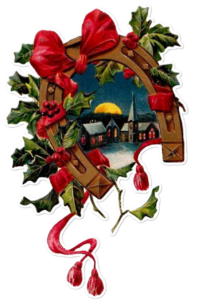

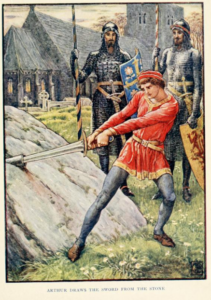
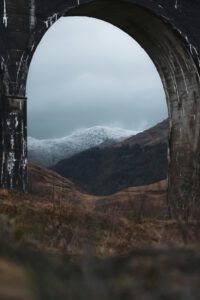

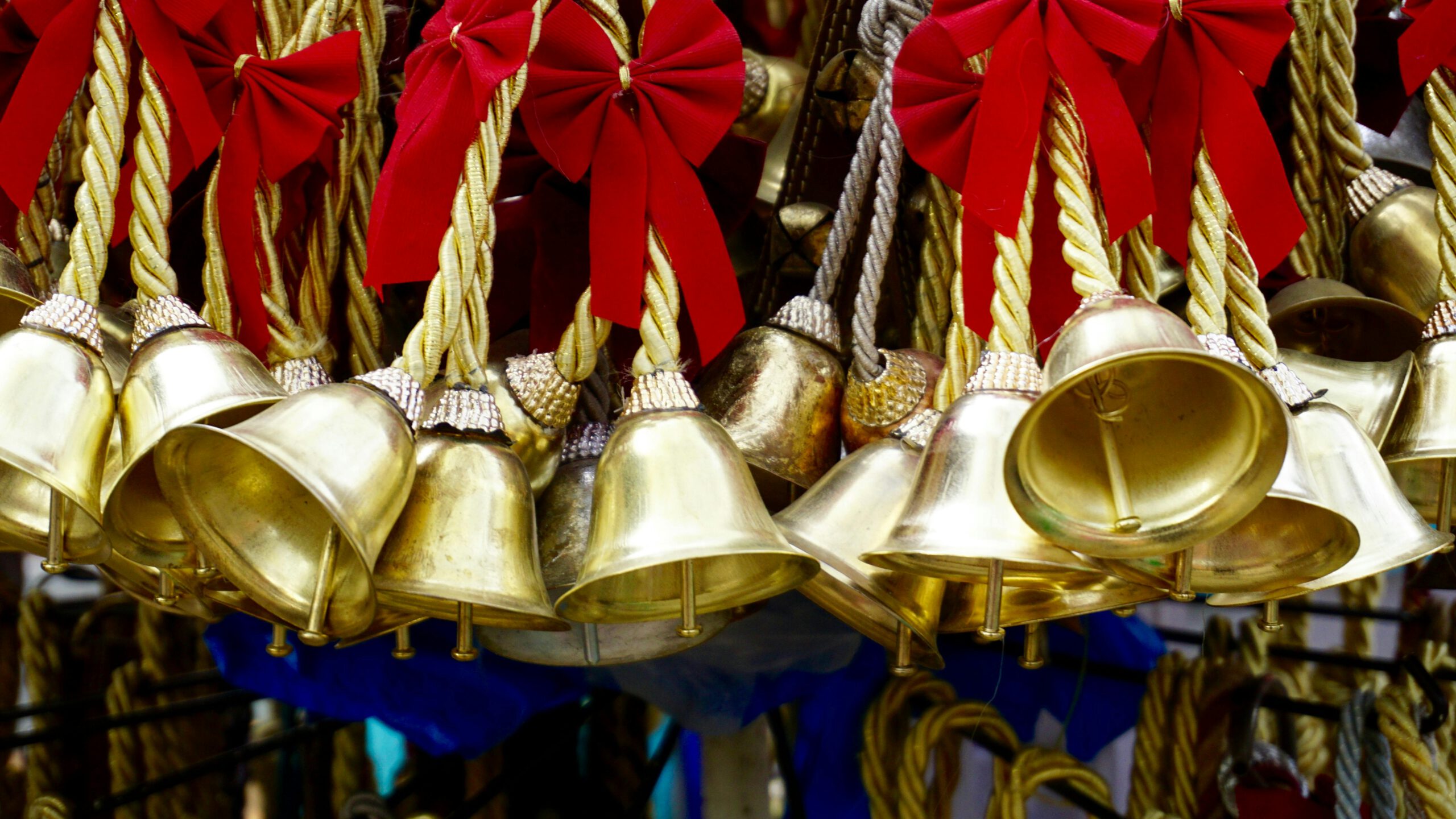 Ring out, wild bells, to the wild sky,
Ring out, wild bells, to the wild sky,